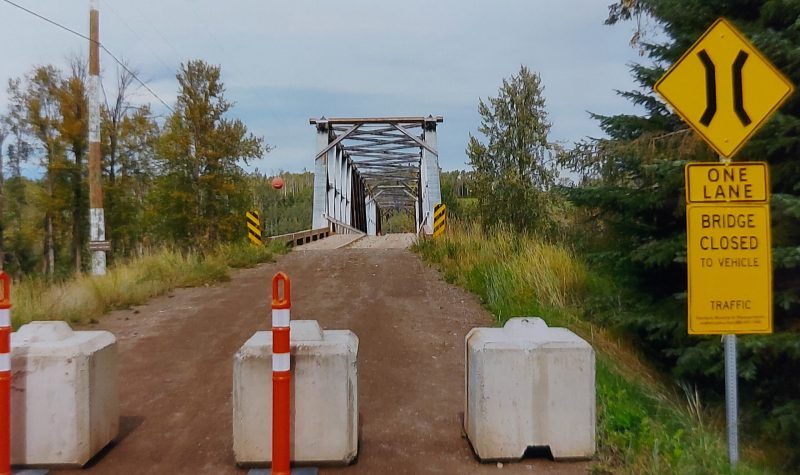A 101-year old Howe wooden truss bridge in the rural community of Quick in northern BC will be demolished within months.
The Ministry of Transportation and Infrastructure in BC have deemed the Quick Bridge as unsafe for vehicle traffic, and it has been closed to vehicle traffic since June 2021. This is not the first time this bridge has been closed in its 101 year history.
As far back as 1948, repairs have been done to components of the bridge including the concrete piers that support the structure, repairs to the crossings, and the approaches to the bridge. Significant repairs to the bridge were completed as recently as 2004. Then, in 2010, the ministry began discussions with the Quick Bridge Committee (QBC) about replacing the bridge all together.
The members of the QBC have long-suggested that the 101-year-old bridge have components replaced, and have cited examples of wooden truss bridges that stand longer than 100 years in European countries, as long as the weight restriction isn't increased, and components are replaced when needed.
The Ministry and the QBC have been conducting years of correspondence, meetings, town halls, and letter-writing, but the time has come that the demolition and replacement job has gone to tender on BC Bid.
This work is slated to begin in the spring of 2022, and CICK News spoke with with QBC member David Gillespie and Rena Gibson, district manager of the Bulkley/Stikine Transportation District Office.
The Quick Bridge Committee is a small group of residents in Quick (a community of about 40 people in rural BC).
They have gathered research, kept correspondence with ministry representatives as well as structural inspectors to discuss their preference to replace decayed structural timber components rather than demolish the entire bridge, ultimately changing the aesthetic, charm and history of the current structure.
Built in 1921, the Quick Bridge was a link between the Grand Trunk Pacific Railway and the vibrant farming community on the north side of the valley.
It replaced the Hubert Bridge which was taken out by ice in 1919. Two years later, when the 300 ft. span double span bridge was built 12 ft. above winter water levels and 8 ft. above the flood plain, mounted on three concrete piers.
Gibson defends the ministry’s choice, citing the safety of the river crossing, but that their opinion is that "replacing components is impractical."
Listen to Pam Haasen's interviews with Gillespie and Gibson in the link below:


